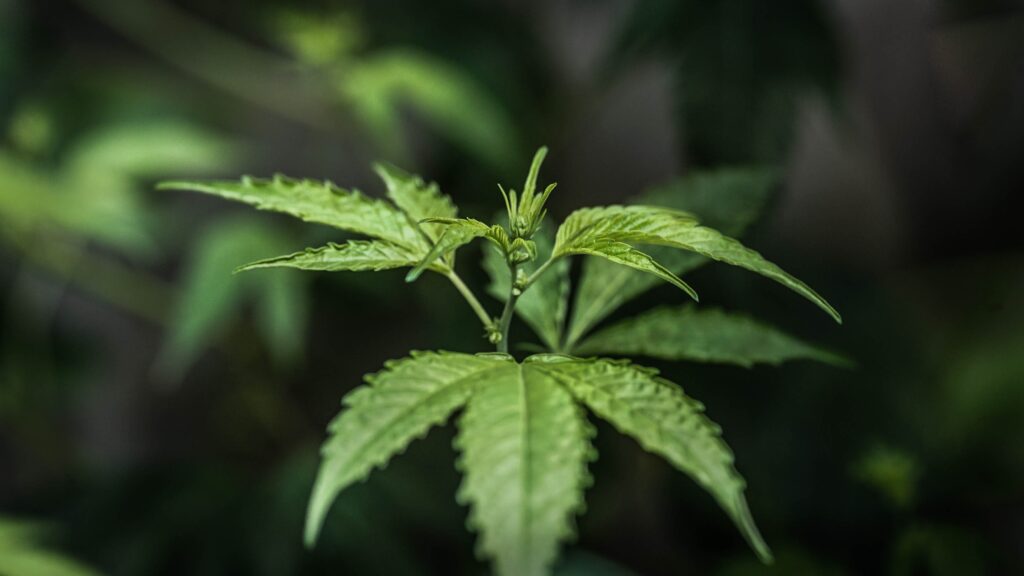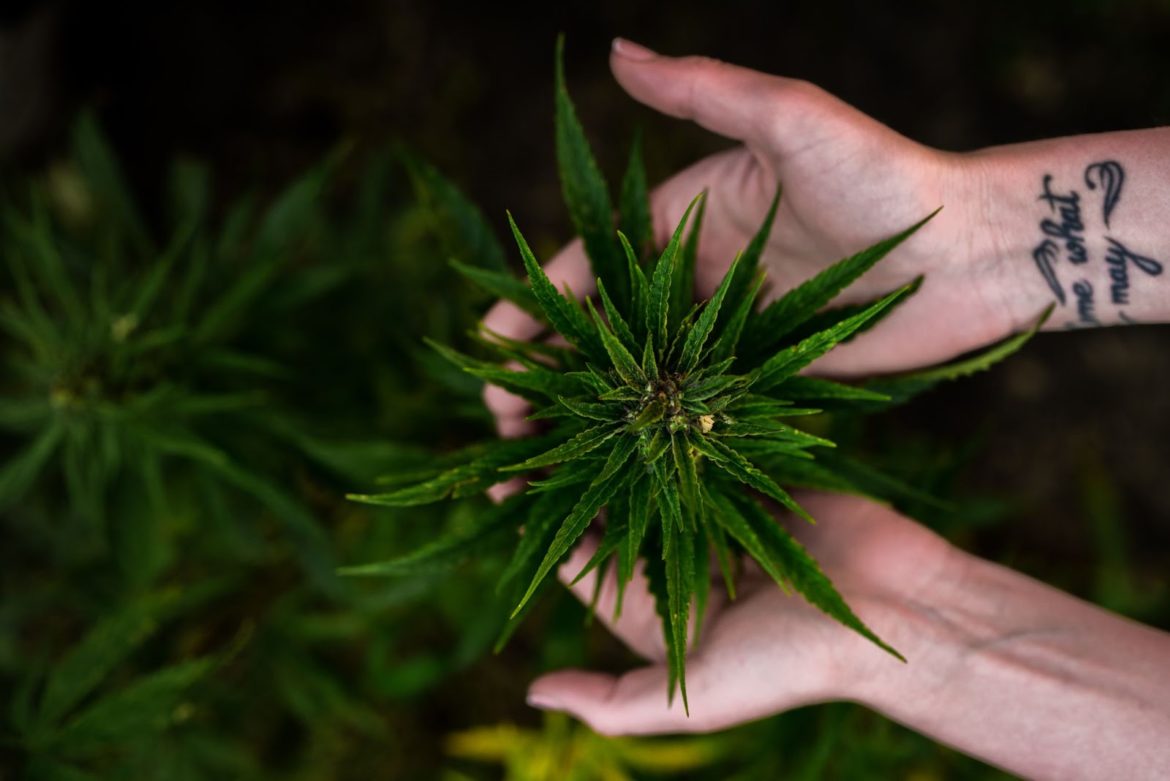If you’re interested in growing cannabis, you have a long road ahead of you. Growing cannabis can be expensive and labor-intensive, and this doesn’t even include the drying and curing processes necessary before you can use the cannabis you grew.
If you’re in it for the long haul, here’s what you need to know.
Setting the stage
The first thing you’ll need to do is stage an area to grow your cannabis. This should be an indoor space where you can control the light, temperature, airflow, and humidity. Many people repurpose a walk-in closet for this purpose. Others will pitch a tent in their garage to serve as a portable contained grow space.
Your lights
Wherever you decide to grow, make sure you have complete control over the lighting. Light interference outside of your set schedule will negatively impact the way your plant grows. You don’t want your plant to produce male flowers. Male plants produce flowers without buds and create pollen, and neither of those outcomes will be desirable to you.
You need to choose your own lights and control them appropriately. Many growers set their lights on timers so they don’t forget to turn them on or off at the exact right times. Lights generally create a lot of heat and are very expensive to run.
LED grow lights generate the least amount of heat, use the least amount of electricity, and last longer than any other kind of light. This efficiency and ease of use will cost you more upfront. LED lights are a more expensive initial investment, but they pay off in the long run.
Your plants will require 16 hours of light a day when they’re growing leaves, and 12 hours of light per day when they’re ready to bloom. This means that you’ll need to keep your lights on for at least half the day, every day, for up to 30 weeks.
Temperature and environment
Cannabis plants require constant air circulation and strict temperature control. During light hours, your plants should never exceed 85 degrees. A temperature of 70 degrees is ideal. When the lights are off, your plants should never be higher than 70 degrees. A low of 58 degrees is the ideal temperature. Placing a thermometer on the wall will help you monitor your temps.
Your grow room needs an exhaust fan towards the top to whisk away the old, warm air, and a fan introducing cooler, filtered air near the bottom of the room.
The best way to determine the way your temperatures work with the lights off and on and how efficient your air system is would be to try it out on inexpensive herbs. Do a few dry runs with store-bought oregano plants. Record your temperatures at different times of the day, with the lights on and with the lights off.
You may need a stronger exhaust fan or an air conditioning unit to supply the fresh air to your plants. The best time to find this out is before you ruin a weed plant.
Hydroponics or soil?
Many experienced growers prefer to grow their cannabis with a hydroponics system. Hydroponics systems are wonderful, but they’re definitely not beginner-friendly. If this is your first attempt, stick with the soil. If you grow your cannabis in soil and properly care for it, it will be just as enjoyable as a hydroponically grown weed.
Deciding on a strain
You need to choose what kind of cannabis you’d like to grow. If you’re growing it for yourself, this is an easier choice. You’ll pick an indica, sativa, or hybrid you prefer. If you want something off the beaten path, you might choose to grow a unique CBD prevalent strain.
If you’re a first-time grower, choose feminized seeds to assure you won’t need to identify and separate male plants. This will save you a lot of hard work and hassle, and prevent you from wasting resources.

Germinating your seeds
The first step to growing your cannabis is germinating your seeds. You want your seeds to begin to sprout before you put them in the soil. Germinating your seeds will allow you to determine how many viable seeds you have in a set, preventing you from wasting resources attempting to grow seeds that won’t germinate.
The easiest way to germinate seeds is with a baking sheet, aluminum foil, and some paper towels. Get some paper towels wet and wring out the excess moisture. Lay them down on one baking sheet, evenly spaced. Wet a few more paper towels and wring out the excess moisture. Lay it on top of the seeds, and cover the whole baking sheet with foil to keep the light out. Store the baking sheet someplace warm. It can handle temperatures up to 90 degrees.
Then, the waiting game begins. You should check your seeds daily for the presence of a taproot. The taproot is a long white root that will break through the shell of the seed. If your paper towels begin to dry out before the taproot starts to form, use a spray bottle to spritz water on the paper towels.
Avoid touching your delicate seeds or taproots when they appear.
As the taproots appear, you can place your plants into small pots. Two-inch diameter biodegradable pots filled loosely with nutrient-rich potting soil will work well for the early stages of the plant’s life. Poke a tiny hole in the center of the pot and use tweezers to drop your seeds in, with the taproot submerged in the soil.
Water your germinated seeds by misting them gently with a spray bottle. They’re very delicate at this stage, and this makes them prone to drowning. Overwatering them can kill them before they have a chance to sprout. At this stage, your plants will need about 16 hours of light per day.
Keep a watchful eye on the containers. Eventually, you should see tiny little green leaves peeking up through the soil in each container. This is a sign that your plant is thriving and will continue to thrive with proper care.
Growing your plants
Once your seedlings start to produce leaves with five points, they’re ready to be placed into their permanent containers. If you use biodegradable containers, transferring them is easy. Prepare your large growing containers by filling them with soil and a nutrient mix for cannabis plants, according to package instructions.
Scoop the dirt out of the center of the container, and peel away the sides of the biodegradable container. Place the plant, dirt and all, into the center of its new container. Loosely fluff the soil up around the plant to “bury it”.
During the vegetative phase, your plants will need 16 hours of light a day. Using a premixed cannabis nutrient blend for your plants according to package directions will save you a lot of time and effort in mixing individual nutrients. You should be watering your plants sufficiently, taking care not to oversaturate the roots. Cannabis roots can easily rot if they’re exposed to too much water. Make sure your plant pots are properly draining.
When your plants start to develop little white hairs, they’re entering the flowering stage. Switch to a nutrient blend for flowering plants, and cut your light back to 12 hours a day. About five weeks into the flowering stage, the bud will be set. No more buds will form, but the ones that are already present will begin to grow larger with proper care.
Harvesting your cannabis
When your flowers reach full maturity, their pistils will start to change color. Check the buds every day six weeks after they appear to measure their progress. When the buds are ready to harvest, they will be covered in frosty white trichomes. If you’re growing an indica plant, you may choose to wait to harvest until the trichomes begin to turn an amber color.
You can harvest your buds by removing the entire branch of the plant they’ve grown on and gently manicuring away the surrounding leaves.
Don’t forget about drying and curing your cannabis
After you’ve harvested your cannabis, you need to dry and cure it before it can be used. You’ll need to set up a temperature and humidity-controlled drying room to monitor the drying process, and some kind of airtight container to cure it. This is a separate process that takes several weeks, but it adds to the time and labor of growing your cannabis. Some strains taste best when they’re cured for as long as six months.
Is it worth it?
Growing cannabis is very expensive and very time-consuming. If it’s a labor of love for you, it’s absolutely worth it. Just keep in mind that it’s going to cost you, in total, over a thousand dollars and about half a year of your time to get from seed to fully cured cannabis. It’s usually cheaper and always faster to buy cannabis from a mass producer who can keep the costs down.
The takeaway
If you understand the amount of work involved in growing cannabis and you decide it’s not for you, no worries. If you decide to grow cannabis, it’s going to be a while before you can enjoy the fruits of your labor. In the meantime, there’s always Emjay. You only need to wait half an hour for us to deliver your favorite strain directly to your door. We’re here when you want a joint, no patience required.
